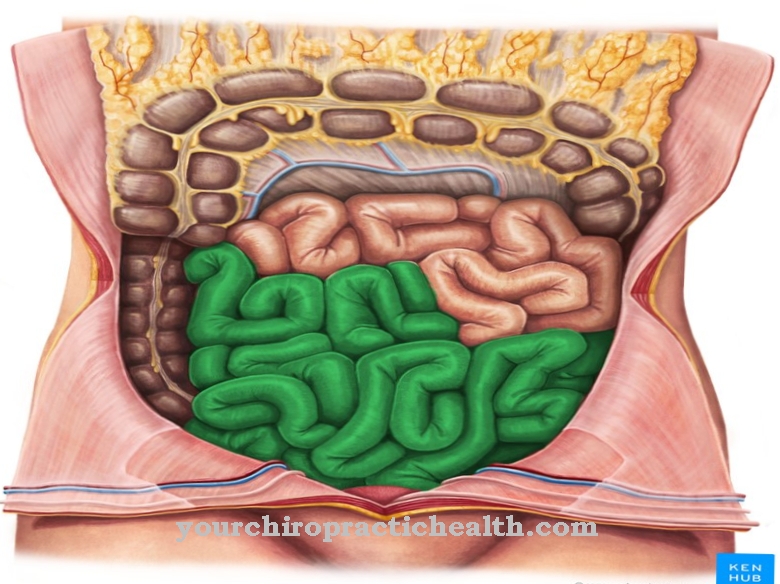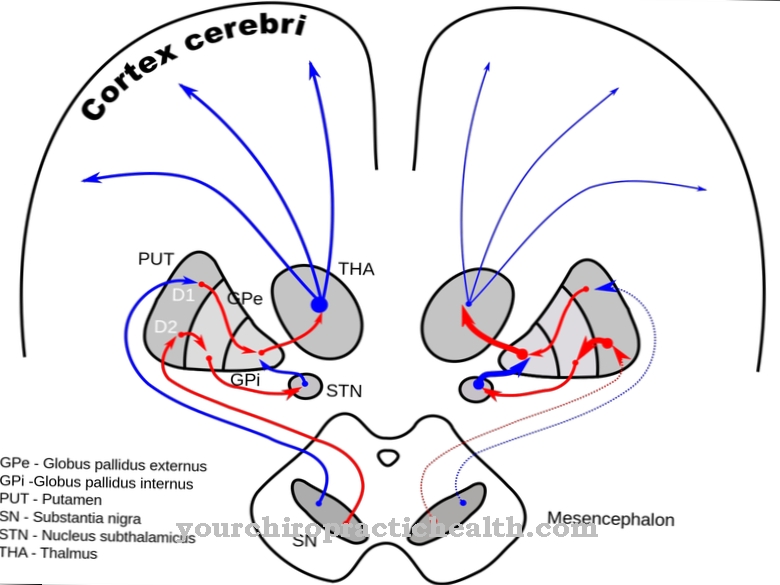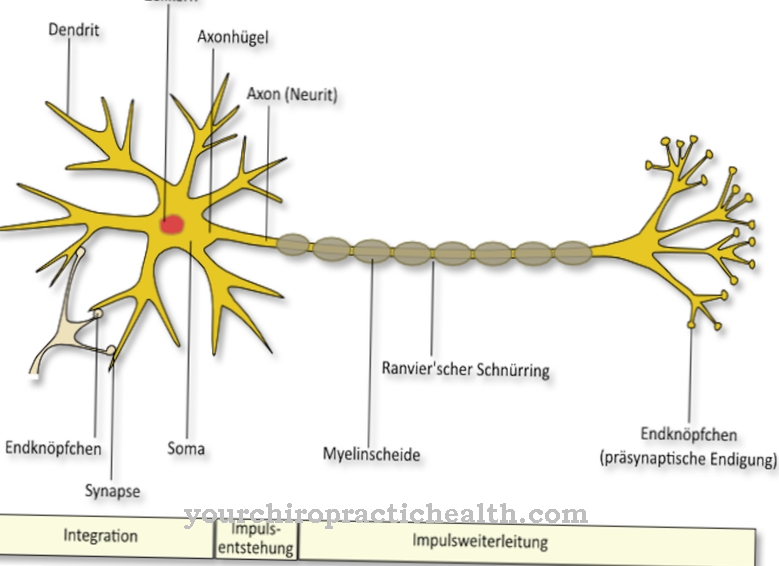The Subcutaneous tissue is the lowest of three layers of the skin. It is the supply and support station for the entire skin with a number of other important functions.
What is the subcutaneous tissue?

The subcutis, also known as the “subcutis” or “hypodermis”, is the lowest of a total of three layers that make up the skin. It practically forms the link between the body and the overlying skin layers, the dermis and the epidermis.
The main components of the subcutis are loose connective tissue and stored fat cells (lipocytes). The subcutaneous tissue is clearly delimited from the body by a fascia, which consists of solid collagen fibers and envelops the entire body.
Anatomy & structure
The subcutis or subcutis reaches a thickness of 0.5 mm to 30 mm, depending on its position on the body, consists mainly of loose connective tissue and ensures that the skin can be moved relative to the body surface below.
Connective tissue strands from the overlying dermis run through the subcutaneous tissue and form a firm connection with collagenous tissue (fascia) of the body below the subcutaneous tissue. They limit the displaceability of the subcutaneous tissue so that it moves back to its starting position after the mechanical sliding stimulus has ended.
Arterial and venous blood vessels and nerve cords run in the subcutis, each with a large number of branches in the dermis. The subcutis also houses fat cells (adipocytes) as energy stores, "shock absorbers" and protection against the cold. So-called Vater-Pacinische tactile bodies are distributed in large numbers in the subcutaneous tissue.
These are receptors for mechanical stimuli that react particularly sensitively to vibrations and feed them back to the brain. In a few places of the subcutis there are also cells of the smooth muscles, e.g. B. in the area of the scrotum, the labia and the nipples.
Function & tasks
As a link between the body and the dermis, the subcutis takes on a variety of tasks above the subcutis. The arterial blood vessels supply the overlying skin layers with oxygen and nutrients. The venous vessels discharge carbon dioxide and other "waste materials".
The stored nerve cords collect the impulses of the various mechano and temperature receptors in the dermis and pass them on to the brain. Likewise, stimuli from the Vater-Pacinischen tactile bodies placed in the subcutis itself are passed on to the brain via nerve cords. The probe bodies react particularly sensitively to vibration stimuli. The fat stored in the adipocytes serves on the one hand as a chemical energy store in the event that there is no longer any food available.
On the other hand, it also serves as a mechanical buffer for pressure surges or impacts from the outside, but also z. B. as a natural "gel cushion" in the sole of the foot that softens mechanical impacts on the spine when walking and running. The fat also takes on the function of thermal insulation and can provide effective protection from the cold. It is constantly stored as a reserve "for bad times" when excess - unneeded - energy has been extracted from the food in the digestive tract.
The strands of connective tissue that connect the overlying dermis with the underlying fasciae of the body limit the mobility and prevent the dermis and epidermis from being easily detached from the subcutaneous tissue. They are like the straps of the skin.
Illnesses & ailments
The stored fat cells in the subcutaneous tissue can suddenly grow and proliferate and form lipomas (lipomatosis) for reasons that have not yet been adequately clarified. They are benign, firm, fatty tissue nodes that can range in size from a few millimeters to several centimeters.
Often found in fatty tissue around the thighs, abdomen, upper arms, and neck, lipomas are usually harmless and painless. However, if they put pressure on nerves or blood vessels, or if they pose a serious cosmetic problem, they can be removed with liposuction or surgery. Lipomas tend to recur, which then requires another intervention.
In relatively rare cases, subcutaneous fat cells can be the starting point for liposarcoma. It is a malignant tumor, the cause of which has not been clarified. Starting point can e.g. B. be a previous injury or ionizing radiation. The liposarcoma can be surgically removed and treated with chemotherapy. There is obviously no connection with the harmless lipomas.
Mechanical injuries to the subcutaneous tissue or damage from strong cold or heat stimuli lead to necrosis of the affected fat cells, which can lead to inflammation in the subcutaneous tissue. The dead lipocytes then tend to sclerosis, which means that hardened connective tissue forms in their place, a kind of internal scar. Edema, accumulations of tissue fluid in the subcutis, can develop from various causes, which regress again after the cause has been eliminated.
You can find your medication here
➔ Medicines against redness and eczemaTypical & common skin diseases
- Vitiligo (white spot disease)
- skin rash
- Skin fungus
- Rosacea (rosacea)
- Systemic lupus erythematosus (SLE)
- Skin cancer



























